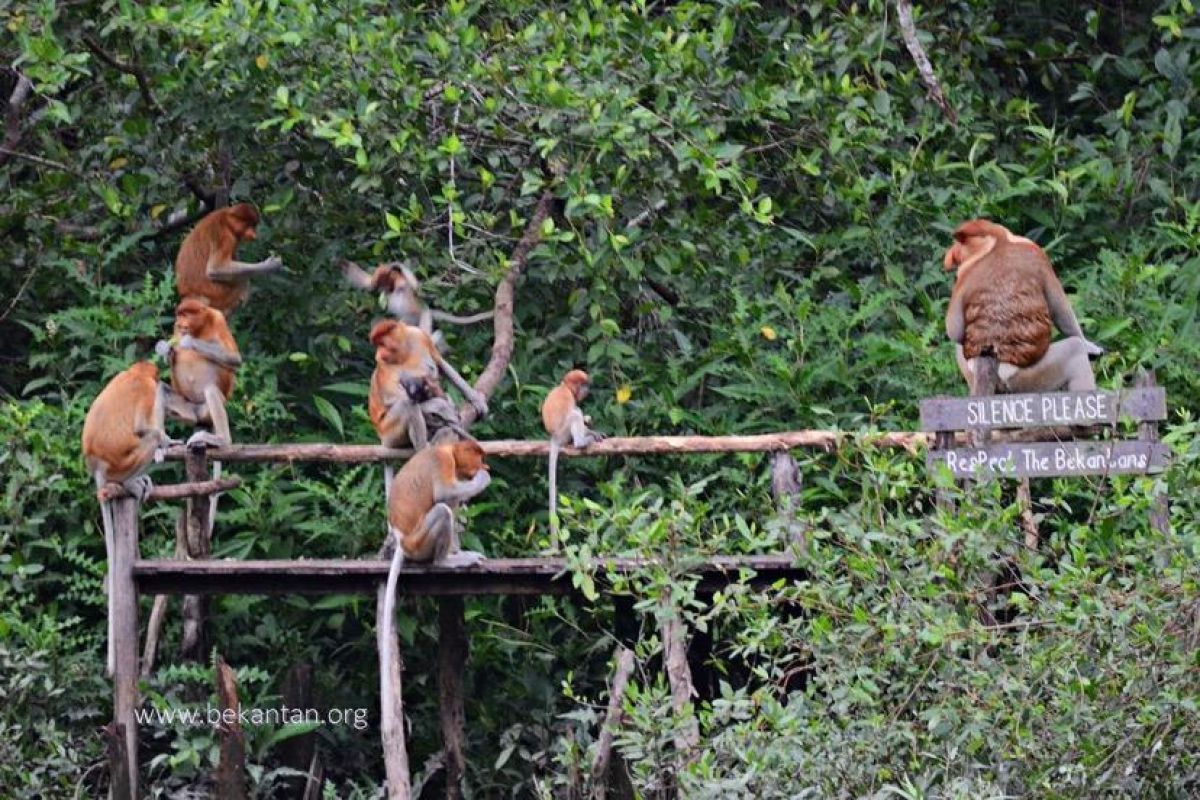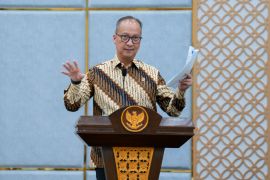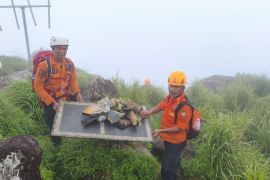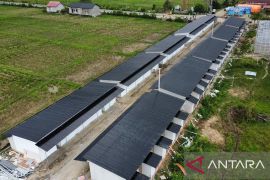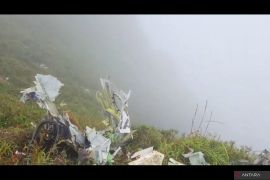In addition, Prof. Tim Roberts is also the research supervisor of my doctoral program dissertationJakarta (ANTARA) - Caption: A group of tourists at Curiak Island, which is home to proboscis monkeys (nasalis larvatus), known locally as Bekantan. (ANTARA/SBI)
Curiak is one of the small islands dotting the Barito River delta area in Anjir Muara sub-district, Barito Kuala district, South Kalimantan.
The island is around 18 kilometers away from Banjarmasin, the capital of South Kalimantan.
Earlier, just a small, neglected island, Curiak was not even included on Google maps as it covered an area of just 2.7 hectares.
Now, with the replanting of rambai trees, the area under the island has been extended to 3.9 hectares, and the efforts of conservationists have helped put the island on tourist maps.
Ever since Sahabat Bekantan Indonesia (SBI) developed the island into the Bekantan Research Station in June, 2018, it has become a global name and a draw for special interest tourists.
SBI founder Amalia Rezeki said that a research camp, Camp Tim Roberts, was built in the vicinity of Curiak Island. The camp has been named after Prof. Tim Roberts, a professor at New Castle University, Australia.
He is among the professors who helped establish the Bekantan Research Station and the wetland ecosystem with the Rector of Lambung Mangkurat University (ULM), Prof. Dr. Sutarto Hadi.
"In addition, Prof. Tim Roberts is also the research supervisor of my doctoral program dissertation," Rezeki, a lecturer for the Biology Education Study Program at ULM, said in Banjarmasin on Friday.
Curiak Island can be reached in two ways. One way is to take the trans-Kalimantan road to the Barito Bridge, which is about a 30-minute drive, and then ride a motorboat, also known as kelotok. The boats usually take 10 minutes to reach Camp Tim Roberts.
Another way to reach the island is taking a boat from the Siring area, Bekantan Mascot Park in Banjarmasin, which would take about an hour to reach Curiak. Taking the river route allows tourists to experience the charm of the river communities along the Martapura River, Andai River, Alalak River, and Barito River.
Renting a kelotok costs anywhere between Rp450 thousand and Rp600 thousand, depending on the route and number of passengers.
The more practical-minded tourists can sign up for a tour package with Bekantan Ecotour, which is managed by Kanoco Tour, a local company that organizes riverbank tours.
"Just by spending Rp250 thousand per person, at least 5 people can enjoy an exciting trip on a speedboat (on the river route) which looks luxurious, with a local guide who will explain about the charm of Curiak Island, which is inhabited by a group of nasalis larvatus proboscis monkeys, known locally as Bekantan. The Bekatan have become a mascot and the pride of the province of South Kalimantan," Kanoco Tour director Hifni said.
Paradise for flora and fauna
The diversity of flora and fauna on Curiak Island is also a draw for many tourists, both local as well as foreign.
It is also not uncommon to see foreigners go round this small island on small boats or speedboats, observing the behavior of the Bekantan and other wild animals typical of wetlands.
Curiak Island is a paradise for bird-watchers, too, Rezeki said.
During the migratory season, hundreds of waterbirds, including egretta garzetta (little egret) and sternula albifrons (little tern), can be seen clustered around the coast of Curiak Island.
The brontok eagle (spizaetus cirrhatus) also resides on this island. It is a protected species and among the top predators in the area.
To observe birds and other wildlife, tourists can use the kelotok service of Anjir Muara's Environmental Care Fishermen Group (KNPL).
Using a kelotok allows tourists to follow the small river around the island or observe the sea rambai (Sonneratia caseolaris) trees and take photos or simply soak in the sights of the mangrove forest.
The cost of renting a small kelotok ranges between Rp50 thousand and Rp100 thousand, depending on the area covered and the time.
Besides its natural charm, Curiak Island, which is covered by the mangrove forest of rambai, also has potential for freshwater fishery.
Most of the people here work as traditional fishermen and depend on the Barito River for their livelihood.
The unique life of these fishermen has its own charm. They usually look for fish in the middle of the night and then in the morning, gather at the Anjir estuary in front of Curiak Island, forming a floating fish market on the spot.
The sight of buyers and fishermen gathered on the floating market as the sun rises over the eastern horizon makes for a picturesque sight.
At certain times, the fishing community also performs river alms rituals to offer their gratitude for the abundance of fish from the river, which is their main source of livelihood.
Besides this, Curiak Island is also used as a rambai center and houses a rambai tree nursery, a mangrove house, and an arboretum mangrove.
"This is the first and maybe the only one in the world. In this place, students and researchers can learn about riparian mangroves whose vegetation is dominated by rambai trees," Rezeki said.
The island also has several great photo spots, such as the arboretum mangrove, gazebo mangrove, and the gate of Camp Tim Roberts.
Visitors to the island can even stand on a stretch of rambai tree forest, the result of the rambai mangrove restoration program in the rambai center. There is also a simple monitoring tower for observing the area.
What’s more, visitors can even donate rambai plants and plant them.
"Of course, tourists can get ready to get wet and play with mud. But, do not worry, because we prepare the equipment to dive into the mud to plant trees. For each rambai tree, visitors are charged a donation of Rp50,000," Rezeki said.
Anjir Muara subdistrict head Jaya Hidayatullah said he is proud that the area has now emerged as a tourist destination that is not only known nationally, but also internationally.
He also thanked SBI for developing the Curiak Island area into a highly popular tourist destination.
"In future, we want to collaborate on building a tourist village to complement tourist destinations, based on the local wisdom and the landscape of the remaining rambai mangrove forests," he remarked. (INE)
Related news: Barito River overflows, inundating North Barito's low-lying areas
Related news: Huge vessels can now pass through Barito River
EDITED BY INE
Editor: Fardah Assegaf
Copyright © ANTARA 2021
